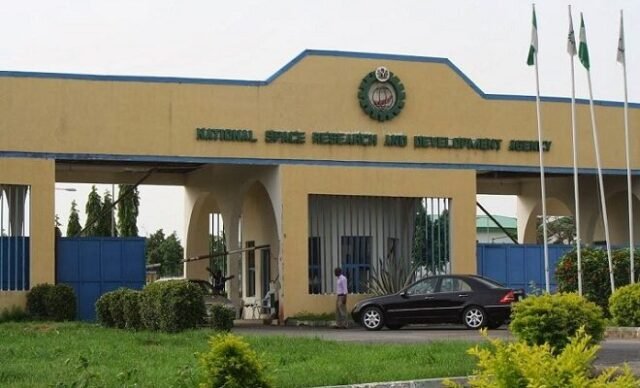In an ambitious stride toward resilient and food-secure futures, Nigeria’s National Space Research and Development Agency (NASRDA) has teamed up with global and regional partners to champion the adoption of advanced digital tools across West Africa. In leveraging satellite technology, geospatial mapping, and mobile platforms, this coalition intends to improve agricultural productivity, reduce crop losses, and foster transparency in supply chains—from fields to consumer plates.
This initiative marks a watershed moment in how space-age science, private-sector innovation, and international collaboration can combine to combat the persistent threat of food insecurity in the region.
Table of Contents
The NASRDA Edge: Crop-Watch and Satellite Insights
At the heart of this initiative is NASRDA’s flagship Crop‑Watch programme, launched in conjunction with key partners including the United Nations Conference on Trade and Development (UNCTAD) and China’s Aerospace Information Research Institute. Crop‑Watch harnesses Earth observation satellites to continuously monitor crop health, acreage, and stress factors such as pests and drought.
Since its inclusion in the programme in 2021, Nigeria has seen remarkable leaps in agri-monitoring:
- Real-time assessments: High-resolution maps and dashboards offer clarity on crop condition indices, arable land area, yield predictions, and stress episodes.
- Agro‑climatic bulletins: Quarterly updates have improved government planning; for instance, the Nigerian bulletin noted a 64 % rainfall shortfall and a 13 % drop in arable land during early 2024—data that triggered prompt mitigation strategies.
- Regional capacity-building: Abuja now hosts a Crop‑Watch centre of excellence. A July 2024 workshop trained stakeholders from eight West African countries on satellite-based monitoring for staple crops.
NASRDA’s Director-General, Dr. Matthew Adepoju, emphasises that Crop‑Watch delivers “actionable geospatial data for precision agriculture”, enabling proactive interventions to secure yields and stabilise food supply.
Beyond offering satellite dashboards, NASRDA is bridging the knowledge gap: training agricultural extension officers to interpret geospatial information and apply it locally.

Public–Private Alliances: From Smart Farming to Digital Identity
NASRDA’s crop-monitoring revolution is being reinforced through strategic partnerships with private-sector players. In March 2025, NASRDA signed a trio of MoUs with GNSS Nigeria, MBH Power, and DIGI SOLS 360 IT Solutions, focusing on integrating digital infrastructure across government systems. These include:
- Vehicle registration systems with electronic tags and RFID tracking
- Smart driving licences
- ICT-based solutions for Ministries, Departments, and Agencies
The push for digital transformation is intended to bleed into agriculture, enabling traceability, supply-chain efficiency, and digital identity for farmers.
Beyond Satellites: Mobile Apps and E‑Extension Support
While Crop‑Watch offers macro-level insights, mobile and web platforms deliver day-to-day support to farmers:
- Agri-advisory Bots: Inspired by Microsoft and IFC’s AgBot, these chatbots offer smallholder farmers weather alerts, pest management tips, and real-time market prices via SMS and messaging apps. Over 500,000 African farmers are already benefiting from similar tools.
- E‑voucher platforms: Cameroon’s PATNUC initiative enrolled more than 9,000 farmers in e-voucher systems for fertiliser and seed subsidies—another powerful boost to productivity.
- Ground-level validation: Nigeria’s Crop‑Watch team developed a mobile app (GVG) to collect geo-tagged agronomic data from farmers’ fields, validating satellite observations. This grassroots input enhances accuracy and farmer engagement.
Regional Collaborations: Scaling Impact Across Borders
NASRDA’s work is most transformative when viewed through a regional lens:
- West African centre of excellence: The Abuja hub not only serves Nigeria but also supports Crop‑Watch expansion across the Sahel and Gulf of Guinea countries. Experts from multiple nations convened in mid‑2024 to harmonise data collection and agricultural monitoring methods.
- UNCTAD’s continental mandate: As part of a UNCTAD-driven scheme, 17 African and Asian nations—from Algeria to Zimbabwe—have harnessed Crop‑Watch. Sharing best practices empowers member countries to manage similar agricultural risks.
- Cross-border knowledge exchange: Nigeria’s weekly bulletins and digital workshops serve as templates for Francophone neighbours like Benin and Cameroon, ensuring that lessons are shared and custom frameworks developed.
Tackling Gaps: Digital Literacy and Access Challenges
Despite a strong technical architecture, effective deployment depends on tackling these structural issues:
- Limited digital capacity among agricultural officers
NASRDA acknowledges that many extension services lack the training to interpret satellite-derived data. To counter this, they’re organising targeted training and collaborating with the Ministry of Agriculture to upgrade GIS infrastructure. - Connectivity and adoption hurdles
Many rural communities struggle with limited internet access and low smartphone penetration. Successful e-tool pilots in Côte d’Ivoire, Benin, and Cameroon show that blending mobile solutions with on-the-ground outreach can boost adoption. - Data gaps in smallholder food loss
Experts report enormous food waste in regional supply chains, ranging from field-level spoilage to market inefficiencies. Digital tools such as drones, sensors, ground-level reporting apps, and supply-trace platforms like FarmForce and AgroTrack are key to capturing accurate loss data..
The Broader Digital Agriculture Revolution
NASRDA’s strategy aligns with a regional pivot toward smart agriculture:
- World Bank-led digital platforms: Côte d’Ivoire’s e-Agriculture Project connected over 400,000 producers (2018–2023), built e-marketplaces, and generated 43,000 new mobile money accounts. Benin and Cameroon similarly rolled out e-vouchers and crop advisory tools, benefiting over 100,000 producers.
- Private-sector digital transformation: Microsoft and IFC are rolling out AgBots and digital training platforms all across Africa, enabling real-time agronomic guidance through SMS and chatbot interactions for half a million farmers and counting.
Taken together, these efforts are reshaping African agriculture from information scarcity to data-driven efficiency, accelerating progress toward United Nations Sustainable Development Goal 2: Zero Hunger.
Voices from the Field: Why Digital Tools Matter
The value of these digital interventions is reflected in the voices of stakeholders:
“By the time stakeholders use this [Crop‑Watch], it will improve production for farmers because we are all working towards precision agriculture and food security.”
— Dr. Rakiya Babamaaji, Crop‑Watch Nigeria Coordinator
“Such collaborations will focus on digitalization projects… with rapid advancements in technology, Nigeria must … create its own, thereby driving socio-economic growth.”
— MBH Power Business Development Manager Dev Shorey, on MoU signing
“When integrated with AI, [market Info-systems] can predict surpluses and recommend timely interventions … uncover behavioural patterns that traditional surveys might miss.”
— Oluwadara Alegbeleye & Adama Ndour on food loss management
❖ Milestones and Measurable Gains
By mid‑2025, the digital agricultural landscape in West Africa is already evolving:
- Satellite surveillance: Crop‑Watch provides quarterly bulletins, satellite maps, and early warning systems for a spectrum of crops and climatic stressors.
- Mobile-based validation: The GVG field collection app ensures that digital interventions are grounded in real-world observations.
- Public‑private collaboration: MoUs with tech firms have established groundwork for digital infrastructure, with immediate extensions to agriculture anticipated.
- Regional scale-up: Training of technicians and expansion of digital tools has moved from a single-nation pilot to a regional deployment.
- Real-time farmer support: Apps, chatbots, e-vouchers, and digital marketplaces are reaching hundreds of thousands of rural producers.
Together, these represent a new era of agricultural data ecosystem, from raw satellite inputs to insights that empower farmers and policymakers.
What’s Next? Looking Ahead
To fully capitalise on this momentum:
- Expand digital literacy – Ongoing training programs for agricultural officers, extension workers, and private stakeholders will ensure satellite data is translated into field action.
- Strengthen rural connectivity – Partnerships with telecoms to extend network coverage and support off-grid digital solutions are essential.
- Reduce wastage – Implement sensor networks, supply-chain traceability, and AI tools to target food loss hotspots.
- Ensure interoperability – Harmonise data across Crop‑Watch, national agricultural systems, market information systems, and e-voucher platforms.
- Scale regionally – Roll out the Abuja hub model to neighbouring countries, coordinating data standards and sharing capabilities.
- Mobilise funding – Secure blended finance, public–private investment, and international support to sustain digital agriculture infrastructure.
Final Word: A New Chapter for West African Agriculture
NASRDA’s leadership in deploying NASRDA digital tools for food security in West Africa exemplifies a roadmap where space-tech, mobile innovation, and regional solidarity converge to fight hunger. From satellite-driven Crop‑Watch insights to grassroots digital validation, these efforts are transforming how food systems respond to climate variability, crop health threats, and market disruptions.
As digital and agricultural frontiers intertwine, West Africa stands on the cusp of a revolution—one driven by data, powered by partnerships, and focused on securing food for all. In this story, NASRDA isn’t just watching crops from space—it’s bridging science and society to nourish a region and chart a new future.
Join Our Social Media Channels:
WhatsApp: NaijaEyes
Facebook: NaijaEyes
Twitter: NaijaEyes
Instagram: NaijaEyes
TikTok: NaijaEyes





